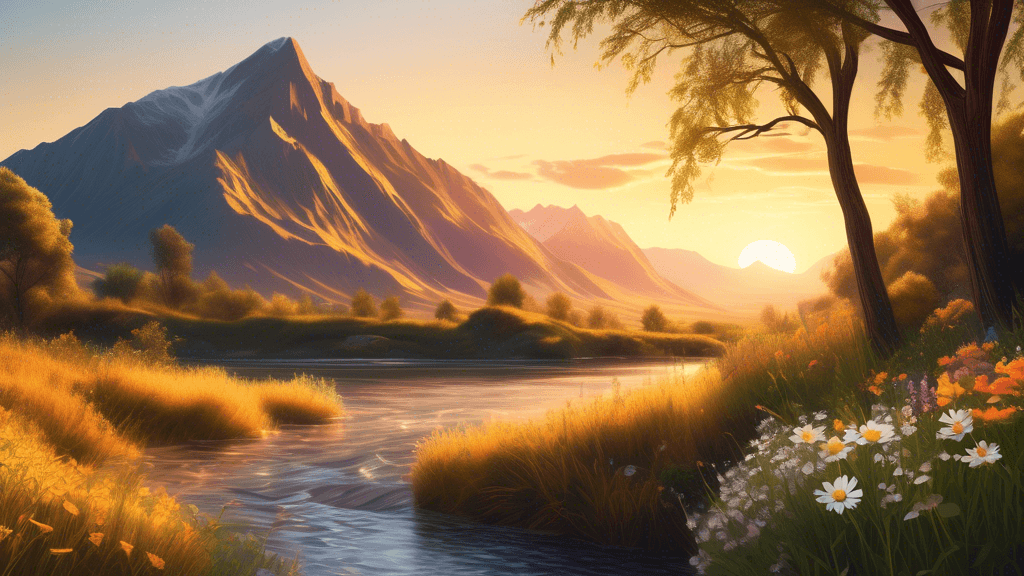
Mastering Composition in Landscape Photography
Share
Understanding the Art of Composition in Landscape Photography
Landscape photography transcends mere capturing of expansive sceneries; it's an art form that requires an eye for composition. The way elements are arranged within the frame can turn an ordinary scene into a stunning piece of art. This blog explores the essential techniques and considerations needed to master composition in landscape photography, making it an invaluable resource for amateurs and professionals alike.
What is Composition in Photography?
At its core, composition is the arrangement of visual elements using various principles and techniques to create balance and intrigue in a photograph. In landscape photography, composition involves the placement of elements like trees, mountains, and water bodies in a way that guides the viewer’s eye throughout the image.
The Rule of Thirds: A Starting Point
One of the most fundamental and widely used compositional techniques is the Rule of Thirds. Imagine dividing your image using two horizontal and two vertical lines to create nine equal sections. The key is to align the subject or important elements of the landscape along these lines or at their intersections. This technique:
- Creates a balanced look
- Increases the aesthetic appeal
- Provides a natural way to draw the eye into the composition
The Importance of a Focal Point
Every effective landscape photograph has a focal point, which is the main point of interest that captures the viewer’s attention. It could be anything from a grand mountain peak to a solitary tree. The choice of focal point drastically impacts the emotional tone of the photograph. Dr. Alan Wilson, an expert in visual arts, emphasizes, The strength of a landscape photograph lies in how effectively it communicates a story through its focal point.
Using Leading Lines
Leading lines are powerful compositional tools in landscape photography. They guide the viewer's eye through the photograph and towards the focal point, thereby creating a sense of depth and scale. Common examples of leading lines include:
- Rivers
- Paths
- Shorelines
- Fences
Balance and Symmetry
Beyond leading lines and rule of thirds, achieving a balanced composition is crucial. Balance does not necessarily mean symmetry, although symmetrical scenes can be visually striking. It's about arranging elements so that no single part of the photograph overwhelfully draws the viewer’s attention away from the rest of the scene. For instance, a large element on one side might be balanced by a smaller, yet visually striking element on the opposite side.
The Role of Light
Light plays a critical role in landscape photography and can dramatically affect composition. The direction, quality, and color of light can enhance textures, colors, and contrasts, thereby influencing the overall mood of the photograph. Photographer Ansel Adams once said, A true photograph need not be explained, nor can it be contained in words. This statement highlights the emotive power of well-composed landscape photography illuminated by perfect light conditions.
Experimentation and Practice
While the rules and techniques provide a great foundation, the best compositions often come from experimentation. Photography is an art form, and part of mastering it involves breaking rules and discovering unique perspectives. Regular practice and review of your work with a critical eye is essential. Try different angles, settings, and compositions to see what delivers the best rendition of a scene.
Conclusion: Crafting Your Visual Narrative
Mastering composition in landscape photography is about more than just capturing beautiful scenes; it's about telling a story and evoking emotion. Whether you are an amateur just starting out or a seasoned professional, focusing on composition will greatly enhance the impact of your landscape images. Remember, each photograph is a reflection of how you see the world, so use your camera to tell your unique visual story.
If you're passionate about photography, art, and environmental conservation, consider sharing your knowledge and experiences. By teaching others, you not only strengthen your own skills but also contribute to a broader appreciation of our natural world.
Now, take your camera, harness these composition techniques, and start capturing the breathtaking beauty of nature! What story will your landscapes tell?





